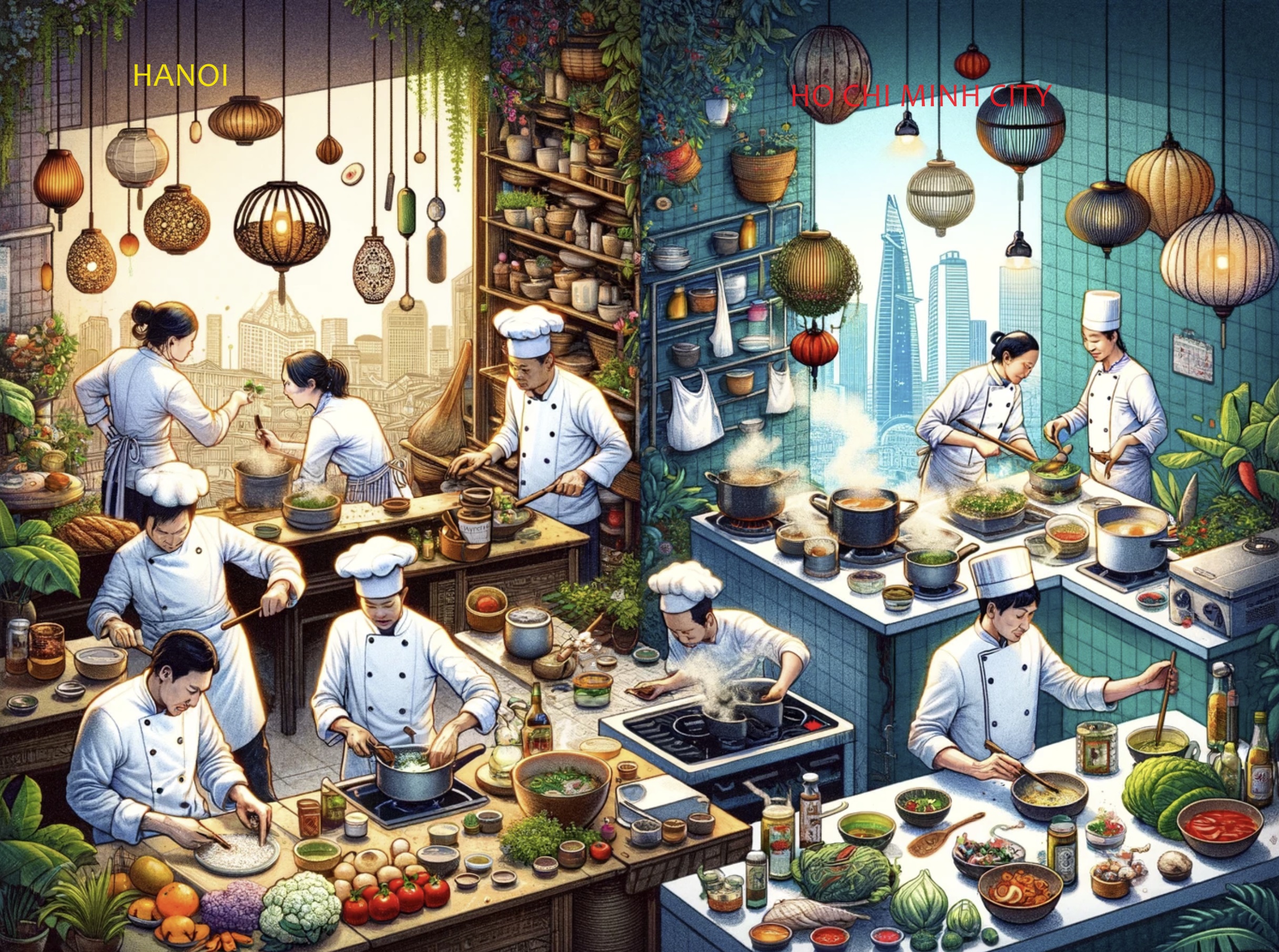
The Evolving Role of Chefs in Vietnam's Culinary Landscape: Insights and Strategic Adaptations
In Vietnam's dynamic culinary scene, chefs are more than just creators of dishes; they are pivotal figures who navigate complex operational, cultural, and business environments. An in-depth exploration of their roles across different settings in Vietnam offers insights into their challenges, adaptations, and their critical influence on the gastronomy and hospitality industries.
1. Operational Challenges and Chef Anxiety in Vietnam
Chefs in Vietnam grapple with high expectations to maintain flavor consistency and presentation, which are crucial for customer satisfaction and business success. Particularly in managerial roles, chefs experience significant anxiety due to their responsibilities for overseeing kitchen operations, budgeting, and process management. This multifaceted role requires them to ensure culinary excellence, manage staff, and maintain financial efficiency—key aspects that affect their job stability and the restaurant's reputation.
2. Distinct Regional Culinary Preferences
Vietnam's diverse culinary map is prominently shaped by regional tastes, which heavily influence chef practices. In Hanoi, chefs are known for their secretive and tradition-bound cooking techniques, focusing heavily on cost management and profitability. Contrarily, chefs in Ho Chi Minh City (HCMC) are recognized for their individualistic and experimental approaches, often incorporating diverse, international influences into their dishes to cater to a cosmopolitan clientele.
3. Segmentation in Restaurant Types and Chef Responsibilities
The nature of the restaurant significantly shapes a chef's duties. Fine dining venues in Vietnam demand meticulous attention to detail, originality, and minimized error, emphasizing exquisite presentation and unique flavors. On the other hand, more casual eateries prioritize efficiency, affordability, and standardization to serve a wider audience. Self-employed chefs and those in specialized single-dish venues often enjoy greater creative freedom, while chefs in multi-dish establishments manage more complex operations that require sophisticated culinary skills and effective multitasking.
4. Influences and Inspirations Across the Culinary Spectrum
Vietnamese chefs draw inspiration from a variety of sources, which mold their culinary philosophies and methods. In Hanoi, the legacy and high standards set by culinary legends push chefs towards excellence and adherence to traditional standards. In contrast, HCMC’s chefs are inclined towards creativity and personal expression, often influenced by their professional training and exposure to international culinary trends.
Conclusion
The multifaceted roles of chefs in Vietnam illustrate the complexities of the culinary industry. As they adapt to evolving challenges and opportunities, their roles extend beyond cooking to encompass significant cultural and economic impacts. This adaptability highlights their expertise not only in culinary arts but also in shaping the business and cultural landscapes of Vietnam’s gastronomy.
